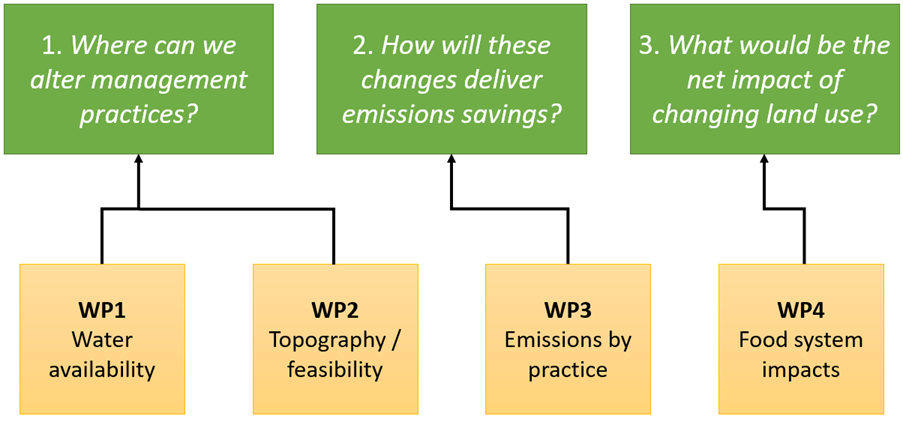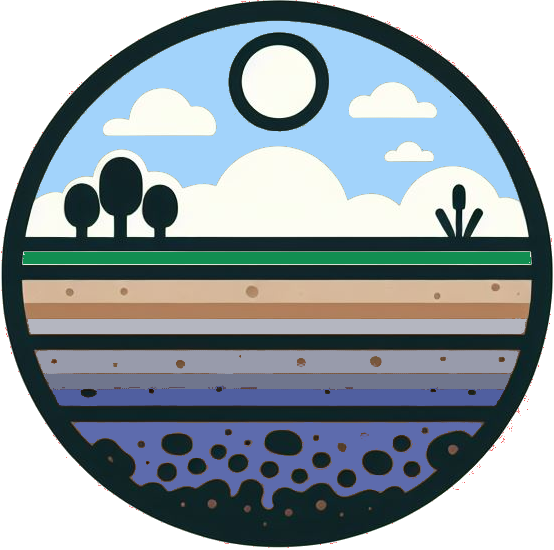In England, lowland peat under agriculture occupies an estimated 243kha, and is responsible for 8.52Mt carbon dioxide equivalents (CO2e) emissions each year (1990-2019 reported figures, 2021); representing 88% of the country’s total emissions from peat. Due in large parts to historic and ongoing drainage, lowland peatlands provide some of the country’s most fertile soils with capacity for high water retention, which can support highly productive arable, horticultural and livestock farming systems. Reducing greenhouse gas (GHG) emissions from cultivated lowland peatlands could generate significant emissions savings, contributing to the Government’s emission target of net zero by 2050.
Emissions abatement from peatlands, particularly lowland peat, is a key focus area of the England Peat Action Plan (EPAP). Restoration is the Government’s central mechanism for delivery, but where restoration is not possible or desirable, the Government has committed to develop more responsible management practices; Defra’s Lowland Agricultural Peat Task Force (LAPTF) has been exploring the changes which might be required to unlock these techniques. Increased ambition on peat rewetting, whether for restoration or more responsible management, is required to meet the Sixth Carbon Budget effort share and net zero targets. We need to improve the evidence base for better water management in lowland peat landscapes as a priority, to design and implement appropriate policies to meet emission reduction targets.
Research widely demonstrates that mean water table depth is the overriding control on peatland emissions. Evidence suggests there may also be the potential to use irrigation as a mitigation technique. To support the Government’s climate ambitions, the Climate Change Committee (CCC) is recommending that 60% of UK lowland peatlands are rewet or sustainably managed by 2050. The CCC define ‘sustainable management’ of lowland peatlands as either a) dynamic water-table management and b) permanent raising of water-tables. To deliver abatement at this scale would require new ways of managing water across lowland peat landscapes.
To inform future peatland policy, we must improve our understanding of the true costs of re-wetting drained peatlands, accounting for the practicalities and wider implications of changing how we manage water in lowland peat landscapes. This includes wider co-benefits, e.g., to biodiversity, reducing peat erosion, hydrology. We need to understand what management options are feasible in the lowlands; where they are feasible; what are the risks and opportunities of changing practices; and the wider environmental, social and economic impacts, including on water availability, quality and flood risk. Additionally, we need to explore the net impacts of peat restoration and sustainable management (where water levels allow) on food production in England, and the resulting production shortfall needing to be met elsewhere to ensure stable domestic supply, in alignment with the Government Food Strategy. The Government’s Lowland Agricultural Peat Task Force has discussed the need to better understand the practicalities and economics of system change, highlighting several key evidence gaps to be addressed.
This project aims to develop our understanding of the feasibility and net impacts of changing lowland peat management practices in England. Management practices of interest (although not limited to) include:
- Raising water table levels (permanently and dynamically);
- Irrigation methods;
- Applying mulches;
- Regenerative agriculture techniques.
Project outputs will be used to improve the Government’s understanding of viable management options for lowland peat; help design policies for peatland management; and consider the net impacts of restoring lowland peatlands. Recognising the need to balance implications for carbon and climate, food and farming, biodiversity, floods and water, we will use the project outputs to inform different solutions which can be rolled-out in combination at a landscape-scale.
We recognise to truly understand the real-world implications of changing management practices on lowland peat, the research and development (R&D) programme will need to include substantial field trials of different management options at larger scales than previous pilots. Field trials will help us to understand the extent to which changes on one farm, or farm cluster, could impact the hydrology, productivity and environment in an area. To deliver meaningful emissions savings, policy needs to understand how much abatement management actions can deliver, how re-wetting will affect what can be farmed, to what extent raising water tables is even possible and the wider environmental and economic impacts of changing management.

